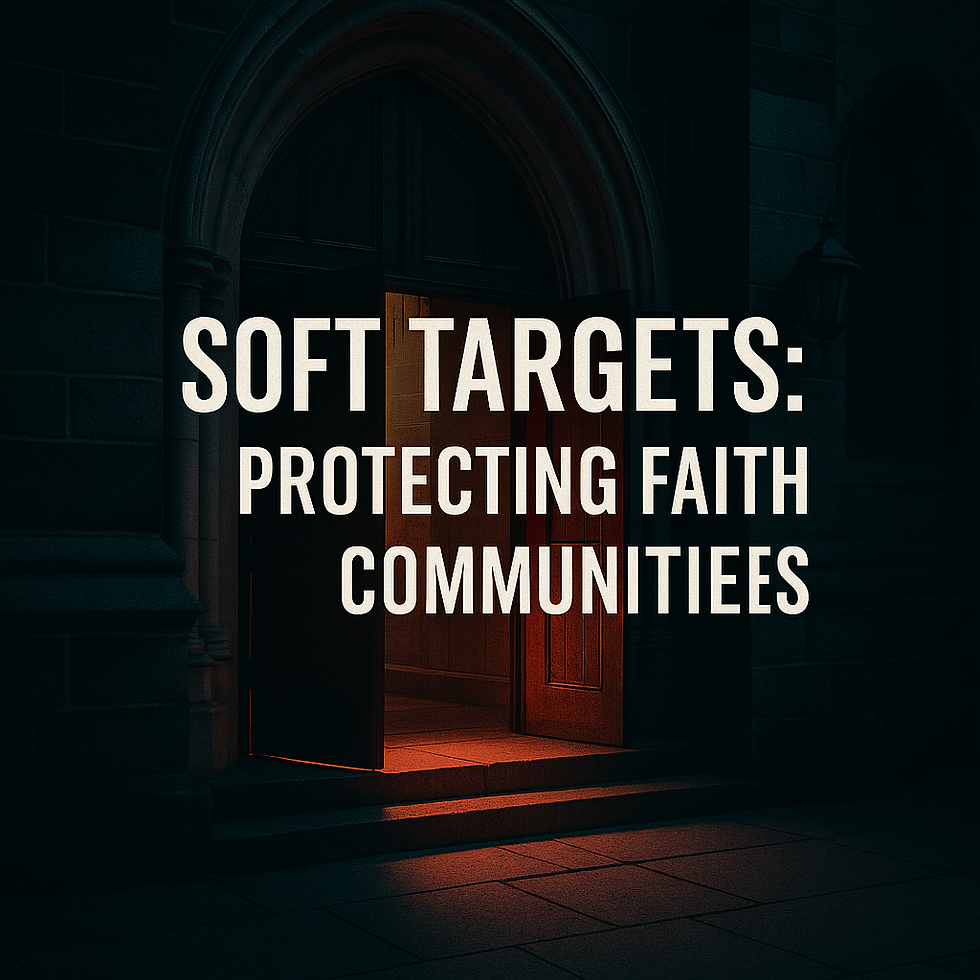How to Conduct an Insider Threat Audit in 10 Steps (for Schools, Hospitals, Corporations)
- CrisisWire

- Sep 30
- 3 min read
The Silent Danger Inside
Most organizations obsess over external attackers. Yet history shows that the most damaging breaches often come from within — a staff member, contractor, vendor, or even a trusted student employee.
In hospitals, insiders have stolen patient data to sell on the dark web. In schools, students with access to facilities have brought in weapons through overlooked entry points. In corporations, departing employees have downloaded gigabytes of intellectual property before resignation.
Insider threats never vanish. They adapt. And unless leaders proactively audit their exposure, they leave themselves wide open to the one risk their cameras and firewalls can’t see: trust.
Why Insider Threat Audits Fail Without Leadership
Blind trust culture: Leaders assume loyalty instead of validating it.
Siloed security: IT, HR, and physical security rarely coordinate.
Reactive policies: Most audits happen only after a breach.
Ignored OSINT: Open-source signals of insider risk (social media posts, online grievances, leaked credentials) go unnoticed.
An insider threat audit is not about suspicion. It’s about leadership responsibility.

Case Studies: When Insiders Strike
Anthem Healthcare Breach (2015): Insider-enabled access exposed millions of records.
Mayo Clinic Case (2020): A hospital employee accessed over 1,600 patient records without authorization.
Twitter Breach (2020): Employees were socially engineered to provide backend access, leading to high-profile account takeovers.
Virginia Tech (2007): Access and behavioral warning signs were ignored; tragedy followed.
👉 OSINT Tie-In: Tools cataloged at OSINT Framework could have flagged unusual activity, credential leaks, and social media red flags long before these cases escalated.
The Insider Threat Audit: 10 Steps
1. Define Scope Across Domains Cover IT systems, physical access, HR, contractors, and third-party vendors.
2. Map Critical Assets Identify what insiders could compromise: data, facilities, finances, student safety.
3. Review Access Controls Audit badge systems, visitor logs, and privileged account permissions. Compare who has access vs. who needs access.
4. Conduct Behavioral Threat Assessments Review reports of grievances, policy violations, or concerning behaviors. Use frameworks like C-STAG or MOSAIC.
5. Apply OSINT Monitoring Audit exposed credentials, disgruntled social posts, and leaked vendor information. Use open-source tools from OSINT Framework.
6. Evaluate Third-Party Risk Vendors, contractors, and student workers often bypass traditional oversight. Audit onboarding and offboarding processes.
7. Test Insider Scenarios Run red-team exercises simulating insider actions: downloading sensitive files, propping open doors, bypassing MFA.
8. Review Data Loss Prevention (DLP) Controls Audit email, USB, and cloud uploads. Ensure alerts trigger on unusual transfers.
9. Assess Culture and Reporting Channels Survey staff and students: do they feel safe reporting insider concerns without retaliation?
10. Leadership Review & Action Plan The final audit step: board and executive ownership. Document gaps, assign fixes, and tie completion to leadership accountability metrics.
Sector-Specific Considerations
Schools & Universities: Student workers and adjunct staff often have disproportionate access. Dorm access audits are critical.
Hospitals: Patient record systems must be regularly checked for unauthorized browsing. Insider threats here are both cyber and HIPAA liability.
Corporations: Departing employees are the #1 insider vector. Offboarding procedures and legal oversight are non-negotiable.
Leadership Responsibility
An insider threat audit is not an IT checklist. It’s a leadership duty. CEOs, trustees, presidents, and boards will be held liable for negligence — by regulators, insurers, and the public.
Technology detects. Leadership prevents.
Your insider threat risk is already inside your walls. The question is whether you’ll detect it before damage occurs.
Read more in:
Contact CrisisWire for insider threat audits, OSINT monitoring strategies, and leadership continuity planning.





Comments